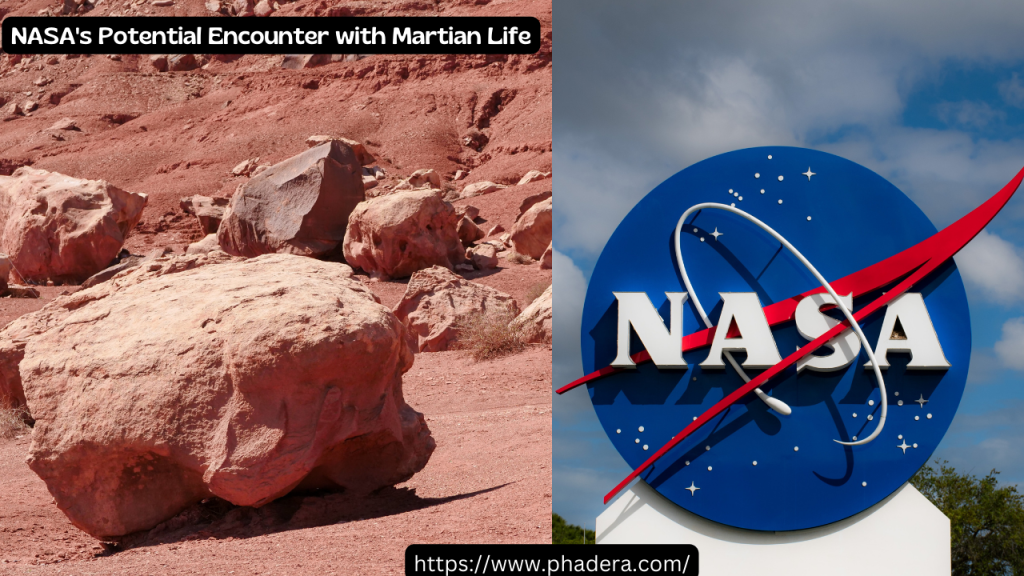
A scientist recently raised the possibility that NASA might have stumbled upon life on Mars nearly 50 years ago, unknowingly destroying it in the process. The Viking landers, which touched down on Mars in 1976, could have inadvertently encountered resilient Martian life hidden within rocks, as proposed by Dirk Schulze-Makuch, an astrobiologist at Technical University Berlin. If such life existed, the experiments conducted by the landers might have unintentionally eradicated it, as the tests could have been too harsh for these potential microbes, as stated in Schulze-Makuch’s June 27 Big Think article. However, experts are divided on whether this theory is a stretch of the imagination or a plausible explanation for perplexing past experiments.
This is ‘a thought that might stir curiosity in some,’ Schulze-Makuch noted. However, it’s worth considering that similar microbes do exist on Earth, and theoretically, they could survive on Mars. So, we shouldn’t completely dismiss this possibility,” he added.
On the contrary, some scientists think that the Viking findings are much clearer than what Schulze-Makuch and others suggest.
Good Things Overload
“Since Earth is mostly a water-filled planet, it seemed like a good idea to add water to the very dry environment on Mars to see if it could encourage life to appear,” Schulze-Makuch explained. “Looking back, it’s possible that this approach was too much of a good thing.”
In super dry places on Earth, like the Atacama Desert in Chile, there are special tiny creatures that can survive by hiding in salty rocks that absorb tiny amounts of water from the air. Mars has similar rocks, and it also has some humidity that could potentially support such creatures. If these creatures had hydrogen peroxide, a chemical some life-forms on Earth can handle, it might help them absorb more moisture and create some of the gases found in the labeled release experiment, Schulze-Makuch suggested.
However, too much water can harm these tiny organisms. In a 2018 study, scientists found that extreme floods in the Atacama Desert killed up to 85% of the native microbes that couldn’t adapt to the wet conditions.
So, adding water to the soil samples from Viking may have been like putting people in the middle of an ocean: both need water to survive, but in the wrong amounts, it can be deadly for them, as Schulze-Makuch explained.”
Viking Landers’ Experiments
Each of the Viking landers, Viking 1 and Viking 2, conducted four experiments on Mars:
- Gas Chromatograph Mass Spectrometer (GCMS) Experiment: This experiment aimed to find carbon-containing compounds (organic compounds) in Martian soil.
- Labeled Release Experiment: This test investigated the possibility of life by introducing radioactively traced nutrients to the soil and monitoring for signs of metabolism.
- Pyrolytic Release Experiment: This experiment checked for carbon fixation by potential photosynthetic organisms.
- Gas Exchange Experiment: This experiment examined the potential for metabolism by observing changes in key gases such as oxygen, carbon dioxide, and nitrogen in the surrounding soil samples.
The results of these Viking experiments were puzzling and have continued to baffle scientists over the years. The labeled release and pyrolytic release experiments showed some indications of possible life on Mars, with subtle changes in gas concentrations suggesting metabolic activity. The GCMS also detected traces of chlorinated organic compounds, initially thought to be Earth-based contamination but later found to naturally occur on Mars.
However, the gas exchange experiment, considered the most crucial of the four, produced a negative result, leading most scientists to conclude that the Viking experiments did not detect Martian life.
In 2007, NASA’s Phoenix lander, a successor to the Viking landers, identified perchlorate—a chemical used in various applications, including fireworks and explosives, and found naturally in some Martian rocks. The prevailing scientific consensus is that the presence of perchlorate and its byproducts can explain the gases detected in the Viking results, effectively resolving the Viking dilemma.
Schulze-Makuch suggests that most of the experiments might have yielded skewed results due to the excessive use of water, as water was added to the soil in the labeled release, pyrolytic release, and gas exchange experiments.
Contested Statement
This isn’t the first time scientists have suggested that the Viking experiments might have accidentally harmed Martian microbes. In 2018, some researchers suggested that when the soil samples were heated, it might have caused a surprising chemical reaction that could have killed any potential Martian life. They think this could explain some of the confusing results from the experiments.
But, as McKay pointed out, scientists who keep trying to find different explanations for the Viking results might be going down the wrong path. “I don’t agree with their reasoning,” he said. “We don’t need to come up with a strange new kind of life to make sense of the Viking findings.
